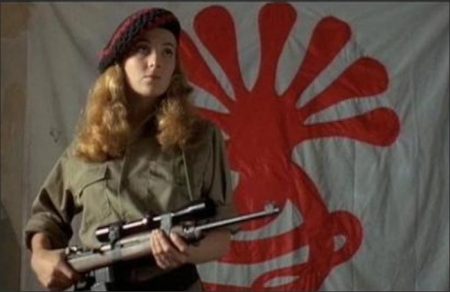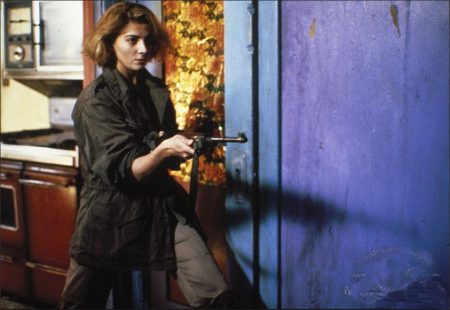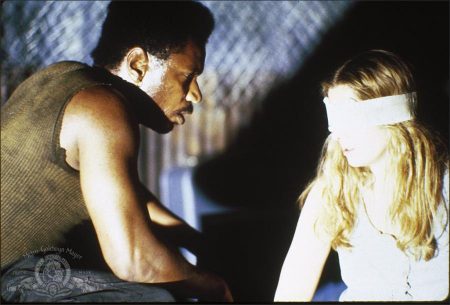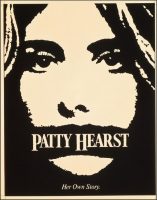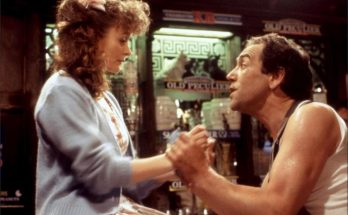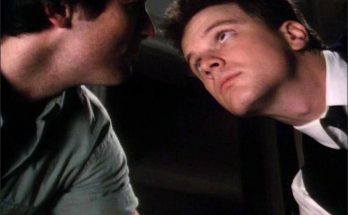Taglines: Heiress… kidnap victim… turned urban terrorist… bank robber.
Patty Hearst movie synopsis. The true story of a rich girl who was abducted by American revolutionaries in the 1970’s. Her time spent with her captors made her question herself and her way of life and she joined forces with the cause that her abductors were fighting for. This created a US scandal and Patty Hearst has become a pop culture fixture.
Patty Hearst is a 1988 biographical film directed by Paul Schrader and stars Natasha Richardson as Hearst Corporation heiress Patricia Hearst and Ving Rhames as Symbionese Liberation Army leader Cinque. It is based on Hearst’s 1982 autobiography Every Secret Thing (co-written with Alvin Moscow), which was later rereleased as Patty Hearst – Her Own Story.
The film depicts the kidnapping of student Patty Hearst by the Symbionese Liberation Army, her transformation into an active follower of the SLA after a long-lasting imprisonment and process of purported brainwashing, and her final arrest after a series of armed robberies.
Patty Hearst premiered at the 1988 Cannes Film Festival on May 13 in the feature film competition. The film opened on September 23, 1988 in the US and grossed $601,680 in its opening weekend. It made a total domestic gross of $1,223,326.
Film Review for Patty Hearst
Patty Hearst, a k a Tania, a member of the self-styled Symbionese Liberation Army, and two of her S.L.A. comrades sit on a bed in an anonymous Los Angeles motel room and watch a ”live” telecast as the police storm their S.L.A. hideout in another part of the city. Everyone in the house is finally killed. It’s only by chance that Patty and the other two are not in the house.
Says Patty, when the televised siege is all over, ”They didn’t even try to take us alive.” This sense of eerie disconnection, of being a participant in events while also being detached from them, is not something that is often dramatized with any success. Even when it is, as in Paul Schrader’s fine new film ”Patty Hearst,” it tends to be chilling and off-putting. It doesn’t make for the kind of neat movie in which one immediately knows how one is supposed to respond.
The success of ”Patty Hearst,” directed by Mr. Schrader from the screenplay by Nicholas Kazan, is that it avoids imposing any kind of reassuring order on the harrowing, real-life story of the Hearst publishing company heiress. Instead, the movie makes scary demands on the audience.
On the evening of Feb. 4, 1974, Patricia Campbell Hearst, age 19, was kidnapped by the S.L.A. from her apartment near the campus of the University of California at Berkeley. For the next six weeks she was kept in a closet, blindfolded, and subjected to periodic indoctrination by her captors. She was bullied, ranted at, lied to and threatened with immediate execution if the police should try to free her.
Miss Hearst became a true media event. At the direction of her kidnappers, she sent taped messages to the outside world urging that her father and the state government meet the demands for her release. At one point she urged her mother not to wear black on television all the time. ”It doesn’t really help things,” she said.
Much like someone kept too long in a zero-gravity tank, Miss Hearst lost all sense of direction and identity, though without losing the memory of her earlier life. As she says in her book, ”Every Secret Thing,” written with Alvin Moscow and published in 1982, she was never unaware of what she was doing.
This is the contradiction with which the courts wrestled when they upheld her conviction for bank robbery and other felonies. It is something movie audiences have to deal with when watching it.
When, finally, the S.L.A. gave Miss Hearst the choice to go free, which she thought might be a trick to kill her, or to join their revolution, she joined. For the next 18 months, she remained with the S.L.A. as a loyal participant in the group’s dangerously addled-brained missions.
The story of Miss Hearst – her kidnapping, her transformation into a bank-robbing ”urban guerrilla,” her capture, trial, sentence and Presidential pardon – remains a haunting one, at least in part because it seems so commonplace, yet inexplicable.
The film’s Patty Hearst, played by Natasha Richardson in an absolutely smashing performance, is a decent-natured young woman of average intelligence, emotionally equipped to cope with nothing much more complex than her classes, family life and routine relationships.
However, in the context of fictional movies about ordinary people who are thrown into extraordinary circumstances and subsequently triumph, Patty Hearst looks like a perfect void. To a certain extent, she is.
”Patty Hearst,” which opens today at Loews 84th Street and other theaters, is a model of swift, spare, unsentimental film making about a character who can never be known, as most fictional characters are, and about a specific time and circumstances that, with hindsight, seem incredible.
When the film was shown at the Cannes Festival this year, European critics were offended by Mr. Schrader’s almost comic portrait of the bumbling methods of the S.L.A. and by what the critics took to be his scorn for revolution in general. In Europe, the spirit of 1968 is still treasured. Students rose in France and West Germany. In Czechoslovakia, an entire nation stood up, and then was crushed. It was a time of great promises and greater sacrifices.
To look at ”Patty Hearst” in this way is to miss the pertinent points of the film, which is about the fragility of personality and the sometimes remarkable success that can be gained by fanatics of an initially well-meaning, totally bent nature.
The film is always sympathetic to Miss Richardson’s Patty. It is fascinated by, and scathing about, the muddled attempts of the white middle-class revolutionaries to assume the mystical ”blackness” of their leader, General Field Marshal Cinque (Ving Rhames), the only black in the eight-man S.L.A. They are pathetic and yet they are killers.
Though made on a comparatively modest budget, ”Patty Hearst” is a beautifully produced movie, seen entirely from Patty’s limited point of view. It is stylized at times, utterly direct and both shocking and grimly funny.
Beginning with Mr. Rhames, every member of the supporting cast is excellent. Miss Richardson goes beyond that, if possible. There’s not a wasted gesture or word. The flat, slightly nasal monotone, which is her California accent, defines the tight-lipped temper of the movie.
Patty Hearst (1988)
Directed by: Paul Schrader
Starring: Natasha Richardson, William Forsythe, Ving Rhames, Frances Fisher, Jodi Long, Olivia Barash, Dana Delany, Kitty Swink, Peter Kowanko, Scott Kraft
Screenplay by: Nicholas Kazan
Production Design by: Jane Musky
Cinematography by: Bojan Bazelli
Film Editing by: Michael R. Miller
Costume Design by: Richard Hornung
Set Decoration by: Jerie Kelter
Art Direction by: Harold Thrasher
Music by: Scott Johnson
Distributed by: Atlantic Releasing
Release Date: September 23, 1988
Views: 656
